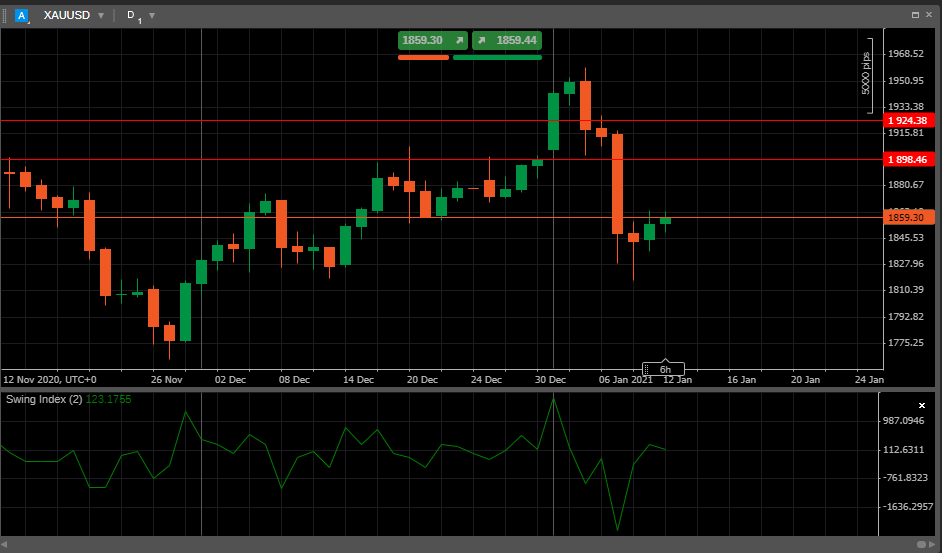Swing Index
The Swing Index is a technical indicator that is mostly used for predicting short-term price movements. It is an oscillator that is used as part of the Accumulative Swing Index for determining price trends for symbols.
Therefore, the Swing Index is a tool for very short-term trading. Literally, the Swing Index is a value from 0 to 100 for an up bar and 0 to -100 for a down bar.
The Swing Index is calculated by using the current bar's open, high, low and close, as well as the previous bar's open and close. When the Swing Index crosses over zero, then a trader might expect short-term price movement upward.
When the Swing Index crosses below zero, then a trader might expect short-term price movement downward.

A Swing Index indicator is intended to provide information on a symbol's price by collectively analyzing its open, close, high and low price. These prices charted on a daily candlestick pattern are integrated into the following formula:
1 | |
Where:
1 2 3 4 5 6 7 | |
R varies depending on a price swing.
First you should determine which of the following is the largest: 1 - (High - Previous Close), 2 - (Low - Previous Close), or 3 - (High - Low), then use the respective equation:
1 2 3 4 5 | |
R depends on the relationships between Today's Closing Price, Yesterday's Highest Price, and Yesterday's Lowest Price. Basically, R is a 2-bar price swing.
By dividing the weighted price change by the price swing we receive the weighted change in absolute values which evaluates the strength and location of a price change (price swing) to a price swing:
When we have a strong swing up and strong price change up, the Swing index will be approaching high positive numbers. When we have a strong swing up and small positive or negative price change (price grew up but then dropped down), the Swing Index will be around zero.
When we have strong swing down and strong price change down, the Swing index will be approaching low negative numbers. When we have strong swing down and small negative or positive price change (price dropped down but then recovered), the Swing Index will be around zero.
1 2 3 | |
Overall, the Swing Index is used to compare a price change to the price swing defining the strength of this price movement - to see whether price swing and price change are aligned (in the same direction) and to see whether the price change is as strong as price swing.
In cTrader, you can find the Swing Index indicator among the other built-in indicators. See the Indicators section to learn how to use them.